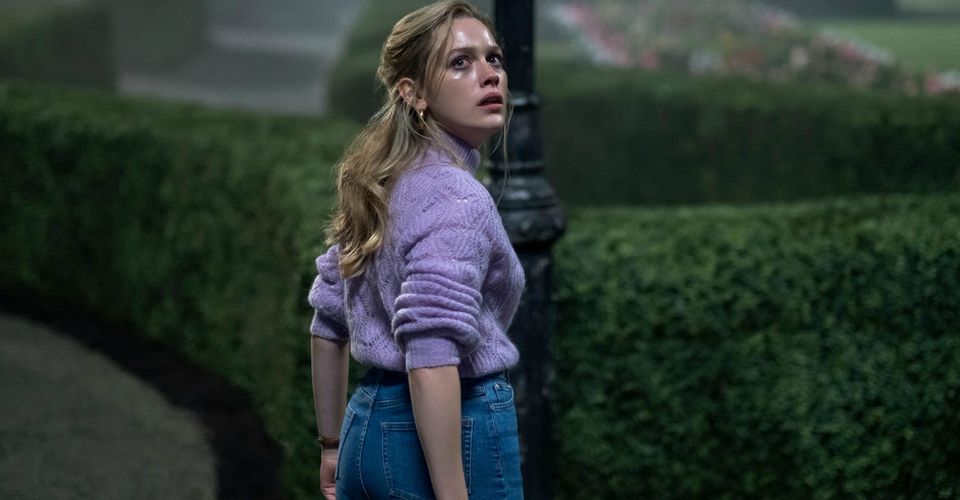Haunting Of Bly Manor’s O Willow Waly Song Is A Classic Horror Easter Egg

WARNING: Spoilers for The Haunting of Bly Manor.
The Haunting of Bly Manor pays homage to a classic horror film with the song “O Willow Waly.” Showrunner Mike Flanagan repeatedly cites The Innocents in his 2020 Netflix series and also references the director of the 1961 psychological thriller. In The Haunting of Bly Manor, “O Willow Waly” may feel like an old-timey folk song, but it’s a relatively new work based on its place in cinema history.
“O Willow Waly” functions as a recurring musical motif in The Haunting of Bly Manor. It’s first heard in the opening minutes of the Netflix series, as the narrator/storyteller (Carla Gugino) states “We lay, my love and I / Beneath the weeping willow” before waking up from a dream in which a lady emerges from a creepy lake. “O Willow Waly” is later sung by seven-year-old Flora Wingrave (Amelie Bea Smith) when her new au pair, Dani Clayton (Victoria Pedretti), arrives at Bly Manor. In the second episode of The Haunting of Bly Manor, the song plays during a game of hide-and-seek, and it’s whistled by Peter Quint (Oliver Jackson-Cohen) in the third episode. During the first half of the Netflix series, the song looms in the background as Dani learns about the history of Bly Manor and all of the people that influenced Flora and her brother Miles (Benjamin Evan Ainsworth) in one way or another. “O Willow Waly” becomes more relevant as The Haunting of Bly Manor reaches its climax.
“O Willow Waly” was produced specifically for The Innocents, an adaptation of Henry James’ 1898 novella The Turn of the Screw – the same source material for The Haunting of Bly Manor and 2020’s other adaptation The Turning. So, Flanagan’s use of “O Willow Waly” represents an homage to Clayton’s film while staying true to the original spirit of James’ work. French composer Georges Auric originally wrote “O Willow Waly” for The Innocents with screenwriter Paul Dehn (Goldfinger). The song is initially sung by Flora at the beginning of the film, and the solemn lyrics about someone waiting for their lover thematically link to various characters and locations. With The Haunting of Bly Manor, Flanagan pays tribute to The Innocents’ director, Clayton, by naming the main protagonist (Dani Clayton) after him.

The “O Willow Waly” motif shifts from Flora to Rebecca Jessel (Tahirah Sharif) in the seventh episode of The Haunting of Bly Manor. By the penultimate episode, the Netflix narrative strays from The Innocents’ storyline by incorporating and altering the plot from James’ 1868 short story “The Romance of Certain Old Clothes.” In that tale, a woman named Viola experiences various problems after the death of her sister Perdita. For The Haunting of Bly Manor, Flanagan’s switches the characters’ stories to set up a “Lady in the Lake” premise that drives the primary conflict for the Netflix series. As such, “O Willow Waly” takes on new meanings, first through Viola’s real-life experiences and later through Dani’s relationship with the Bly Manor gardener, Jamie (Amelia Eve).
Whereas The Innocents implies that governess Miss Giddens (Deborah Kerr) has repressed her sexuality, The Haunting of Bly Manor shows that Dani accepts her romantic feelings for Jamie. Early on in the Netflix series, “O Willow Waly” functions as a melancholy song that seems to represent the collective emotional trauma of past and present Bly Manor residents. Later, the song underlines the conflict between Rebecca and Peter – lovers who are separated by death. The bittersweet conclusion to The Haunting of Bly Manor connects the legacies of both Viola and Dani to Jamie, who carries on the legacy of the narrative subtext about sexuality and self-reflection. The song “O Willow Waly” captures the ebb and flow of the central love story.
About The Author


















